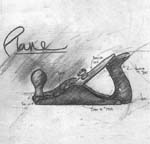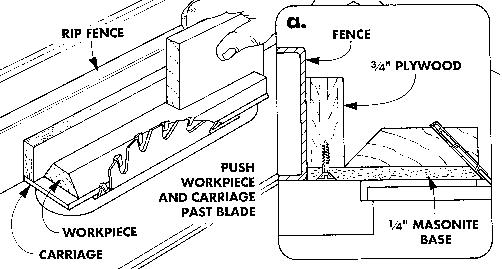Tennessee Valley Woodworkers
 Vol. 18/ Issue 5
May 2003
Editor: Tom Gillard Jr.
Vol. 18/ Issue 5
May 2003
Editor: Tom Gillard Jr. 
Tennessee Valley Woodworkers
 Vol. 18/ Issue 5
May 2003
Editor: Tom Gillard Jr.
Vol. 18/ Issue 5
May 2003
Editor: Tom Gillard Jr. 
Meeting Notice:
The next meeting of the TN Valley Woodworkers
Will be held, May 20 at 7:00 p.m. in the
Duck River Electric Building, Decherd, TN
All interested woodworkers are invited!
The following people have agreed to serve as contacts for their particular skills. If you have questions, suggestions for activities, or other comments relating to these skills, please call these folks. Their interest is to help the club better serve their area of expertise. Your participation with them will help them achieve that goal.
Design: Alice Berry 454-3815
Finishing: Phil Bishop 967-4626
Turning: Tom Church 967-4460
Carving: Harry May 962-0215
Sharpening: Bob Reese 728-7974
Joinery: Ross Roepke 455-9140
Health and Safety: Maurice Ryan
962-1555
![]()
List of Club Officers
![]()
GOD BLESS AMERICA!

Please remember, in your thoughts and prayers, all our Troops in the
Middle East and those on the way home.
FOR MEMBERS ONLY
Don't forget about the club give-away this year.
We have a Tormek sharpening machine for some lucky winner at the Christmas
party.
The Picnic is Saturday, May 24. We will start meeting around 4:00PM. PLACE: Falls Mill in Belvidere, TN.
1. There will be chairs at the picnic, but you can bring your own folding chairs if you like.
2. Bring your favorite covered dish. The club will furnish the chicken.
3. The club will furnish soft drinks, but you can bring tea if you desire.
4. Bring an item you have made to be sold at the auction.
A note about the auction --- The auction in a fun event and has become our major fund raiser. We ask that you bring items to donate for auction. Items that you have made are especially popular. The auction gives our club members the opportunity to obtain work of other members that might not otherwise be available. If you have items for the auction but will not be able to attend you may bring the items to our regular May meeting.
Ya’ll come out and have some fun and excitement!!
****************************************
SHOW AND TELL:
Tom Cowan made a table out of quarter-sawed Mahogany, which he also designed. He scratched a bead around it and textured the balls on the legs. He said it had lots of elements of William and Mary incorporated in it. It was stained with a mix of red oak and cherry. He finished with lacquer.
Loyd Ackerman made a spalted Maple bowl that he bleached and he finished with a water base finish. The water based seemed to keep it from getting a yellow cast. He also turned a bowl from Box Elder and bleached it also and put on a water base finish.
Steve Shores showed pictures of a fireplace he made with burl inlaid out of Red Oak.
Kenneth Clark made a hot dish carrier out of Maple with Walnut handles and stained with Colonial Maple.
Bob Lowrance sent his wife to get some wood at WoodCraft and she came back with a book on carving birds and another on carving faces. He showed the Wren and a face that he had carved out of Basswood.
Billy May showed a bear he had carved out of Basswood and used shoe polish to color it. He also showed a carving of the head of Geranamo made out of White Walnut with a Black Walnut base.
Russ Willis showed a Mandolin case that he made out of Cherry.
Hugh Hurst spent the winter in South Texas where he wanted to get some Mesquite wood. He finally got some and he turned a natural edge bowl out of some of it. He said bark stays on it very well. He turned a bowl out of ornamental Cherry. He also turned one out of Maple with a different shape to it, which he likes. He turned a Walnut one with the same basic shape and finished with Lacquer.
Ross Roepke made 3 crosses out of Popular and Walnut to be used at church for Easter.
Mary Ellen Lindsay brought a relief carving out of New England white pine. It is a picture of two trout. . She used colored pencils to put the color in it and sealed with Polyurethane.
Loyd Murphy turned a vase out of Bodock. He made 3 vases and sprayed them with Deft Lacquer.
David Jacobs made a blanket chest, which he lined with Cedar. The front is out of 15-inch board of Black Walnut. He went to Doyle's dovetail workshop and the joints on the blanket chest were dovetails.
Doyle McConnell cut some burl that he had and made book matched pieces 4 ways and he has some more pieces that are book matched that he gave as door prizes.
Bob Leonard got a piece of Red Oak firewood and it was figured so he used it for a wooden knife. He got the wood from Doyle's firewood pile.
*****************************************************
Ginkgo

Already ancient when dinosaurs walked the earth, one species of tree survives virtually unchanged into the space age. Defying air pollution, disease, and insect infestation, just as it has for 150 million years, the ginkgo (Ginkgo biloba) flourishes along city sidewalks and thoroughfares in the United States and other temperate regions of the world.
To the ginkgo, 20th-century perils don’t stack up to those of past millenniums. Drifting continents failed to destroy it. So did the alternating climatic cycles of tropical temperatures and frigid ice ages. Unlike its contemporaries, the ginkgo defied death. It also stopped evolving as far back as the Paleozoic era, appearing today as it did in prehistoric times.
By the time man began migrating and populating the planet, though, the
ginkgo had retreated from its once-global range to the mountain forests
of eastern and western China. There it thrived until the early 1700s, when
explorers brought seedlings to
Europe. In 1784, the ginkgo was introduced to America.
In China, ginkgo yielded its wood for carving, and the nuts of its somewhat foul-smelling fruit (that only the female tree produces) for toasted treats. However, in ginkgo’s new lands, it makes the ideal ornamental and the hardiest of all street trees. When you see it, remember that you may be viewing what some scientists believe to be the living link in the evolution of ferns to trees.
Illustration: Jim Stevenson
I needed to bevel the edges of a work pieces for a project I was working
on. Beveling the first edge was easy using the rip fence on the table saw.
But when I tried to bevel the other side, the sharp edge of the first bevel
jammed under the rip fence.
To cut the second bevel, I built a carriage, see drawing. The workpiece
rests on the carriage and the two are pushed along the rip fence together.
This way the edge of the first bevel can't get jammed under the fence.
And it's Protected from damage.

I made the carriage with a plywood fence and a Masonite base, see detail
a in drawing. Start with a base that's wider than the work piece. This
prevents tear out along the edge as you cut the bevel.
Roman D. Hershberger
Millersburg, Ohio
![]()
SEE YOU ON THE
20th!!


10 % OFF Fine Woodworking
Books from Taunton Press
…We’re open Monday thru Saturday